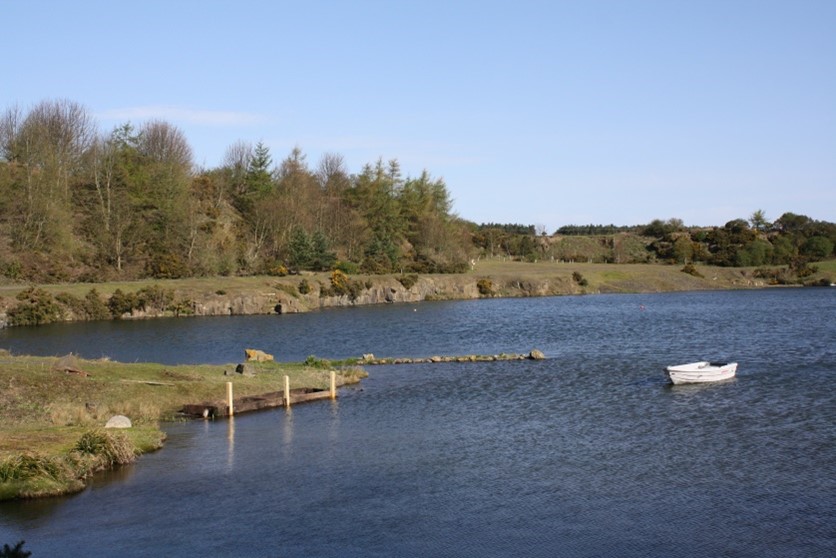The Longhoughton area, located approximately 3 miles to the east north east of Alnwick, has an interesting Geology. A layer of limestone (a sedimentary rock) from The Great Limestone series is found very close to whinstone (an igneous rock). Though a small quarry existed early in the nineteenth century the first registered company was the Northumberland Whinstone Company Ltd., which was formed in 1876. This company was quarrying at Longhoughton by 1887, possibly earlier. The extensive work being conducted at Longhoughton is supported by the large increase in the area of the quarry shown on the 2nd edition Ordnance Maps of the 1890s. At this time the products of the quarry were being removed by road carts. The Manager was a certain John Lamb. Later whinstone quarrying was centred upon Ratcheugh Quarry, which can be regarded as a westwards extension of Longhoughton Quarry. The Northumberland Whinstone Company, is mentioned in Kelly’s Directory of 1902, with 100 men working under manager Andrew Anderson. The company is known to have supplied 6” by 3” setts (plus some crushed whinstone) to Ashington Urban District Council in 1914. By 1925, according to Kelly’s, their manager was a Mr. David Turnbull and they were still operating from the quarry in 1932.
However matters are not completely clear! Records exist showing that a Lease was agreed, in 1896, between the landowners, the Duke of Northumberland’s Alnwick Castle Estate, and H.G. Prowde Ltd., for the use of ‘Longhoughton Whinstone and Limestone Quarry’. A further Lease was granted to the same company in 1919. This may have referred to the new quarry opened up to the east of the original one!
It was the Northumberland Whinstone Company which first introduced the tramways to the quarry, initially using horses to move the wagons. Some of the crushed stone was led away in horse-drawn carts to local destinations in connection with the building and repair of roads. Some was carted the short distance to Longhoughton station yard. As an indication of the size of this traffic, in 1913 there were 26,249 tons of roadstone and 3,875 tons of building stone loaded there onto main line rail wagons!
By the 1940s wagons on the quarry tramway were being moved by small 4-wheeled petrol-engined locomotives which were built for the War Department in WW1. Their responsibilities were to deliver empty wagons to the quarry faces and to deliver the loaded wagons to a winch which hauled the wagons up to the elevated stone crushers. Later the first locos were replaced by four-wheeled diesel mechanical locomotives in the 1940s and early 1950s. These continued work until about 1963 or 1964 when the entire tramway system was lifted. They were photographed at Longhoughton in a derelict state in July 1968 but were scrapped in September 1969.

The Longhoughton Quarry closed in 1974 and has now become a water-filled lake which is a haven for bird-life and is also used for angling. The area is designated as an area of Special Scientific Interest as a result of its interesting geology, including a vein of calcite formed where molten whinstone came into contact with a layer limestone. The Ratcheugh quarry is still used intermittently, supplying rail ballast, rock, gravel, sand and aggregate for the construction industry.
